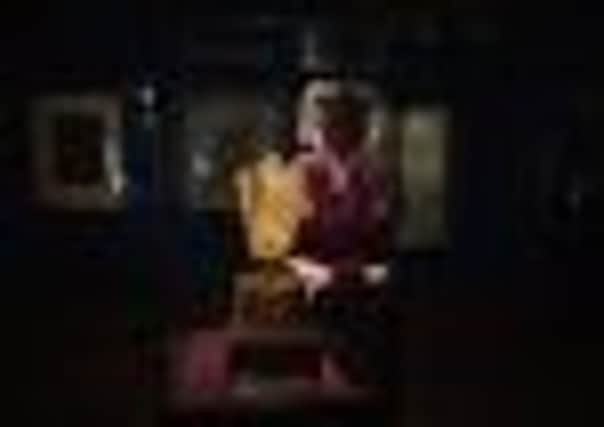Victoria’s Inca crown lends mystery to Jubilee show


The crown, topped with golden feather-like plumes as a symbol of the sun’s power and the Incas’ divine right to rule, is making its first public appearance in Scotland at the show, opening on Friday at the Palace of Holyrood House in Edinburgh.
The plumes would have been worn at the back of the head by a member of the ruling aristocracy in what is now Equador.
Advertisement
Hide AdAdvertisement
Hide AdThe exhibition, “Treasures from the Queen’s Palaces”, features 100 items including paintings, jewellery and manuscripts collected by royalty over more than five centuries.


The crown, which dates from between 1000 and 1400 AD, was excavated in 1854 in Chordeleg, in the Cuenca region of southern Equador, and was presented to Queen Victoria by the country’s president.
However, although always known as the “Inca crown” it has now emerged that mystery surrounds the crown’s exact origins, following analysis by experts at the British Museum in London last month.
Tests on the gold, using the latest non-destructive X-ray techniques, suggest it may have been made by skilled metalsmiths of the Cañari ethnic group, who ruled a powerful confederation until conquered by Inca armies in the mid-15th century.
Dr Colin McEwan, curator for Latin American Collections at the museum, said stylistic details suggested the crown belonged to a pre-Inca northern Andean gold-working tradition.


“One hypothesis, therefore, is that the crown could have been worn by a Cañari lord well before the Inca invasion in the 15th century,” Dr McEwan said.
However, Dr McEwan said the crown also had a strong claim to being of Inca origin. One theory is that it was made by local Cañari craftsmen employed by the royal court of their Inca conquerors.
Advertisement
Hide AdAdvertisement
Hide AdDr McEwan said the plume, designed to shimmer and move as it caught and reflected the sun, was a gold version of the feathered plumes Inca royalty wore in their crowns.
“It’s a little bit of a detective story, and we have only one part of the jigsaw puzzle,” he said.
“The plumes raise the question of whether it was commissioned by the Incas and provide valuable clues to the relationship between the Incas and the Cañaris.”
Other treasures in the exhibition include Rembrandt’s Portrait of Agatha Bas (1641) and works by Leonardo Da Vinci and Michelangelo.
The show will also feature two Easter eggs made by Russian jeweller Carl Fabergé for the Russian imperial family, a necklace and earrings given by Mary Queen of Scots to her attendant Mary Seton, and an Indian mother-of-pearl box dating from 1,600AD given to Queen Elizabeth the Queen Mother when she launched the liner Queen Elizabeth in September 1938, at John Brown’s shipyard in Clydebank.
• Treasures from the Queen’s Palaces runs from Friday until 4 November.
OTHER Diamond Jubilee exhibitions during 2012 include:
Diamonds: A Jubilee Celebration – Buckingham Palace (August and September) shows how diamonds have been used by British monarchs over the past 200 years. Includes some of the Queen’s jewellery.
Advertisement
Hide AdAdvertisement
Hide AdThe Queen: 60 Photographs for 60 Years – Windsor Palace until 28 October. Features the work of leading press photographers of the royals over past six decades. (Queen’s Gallery, Edinburgh – 16 November-24 February 2013.)
Ten Drawings by Leonardo da Vinci – touring the UK, including the McManus, Dundee, 31 August to 4 November 2012. Features drawings specially selected to reflect da Vinci’s use of different media and the range of his work, including engineering, botany, map-making and anatomy.